Utilizing Turkey Feathers for Fly Tying
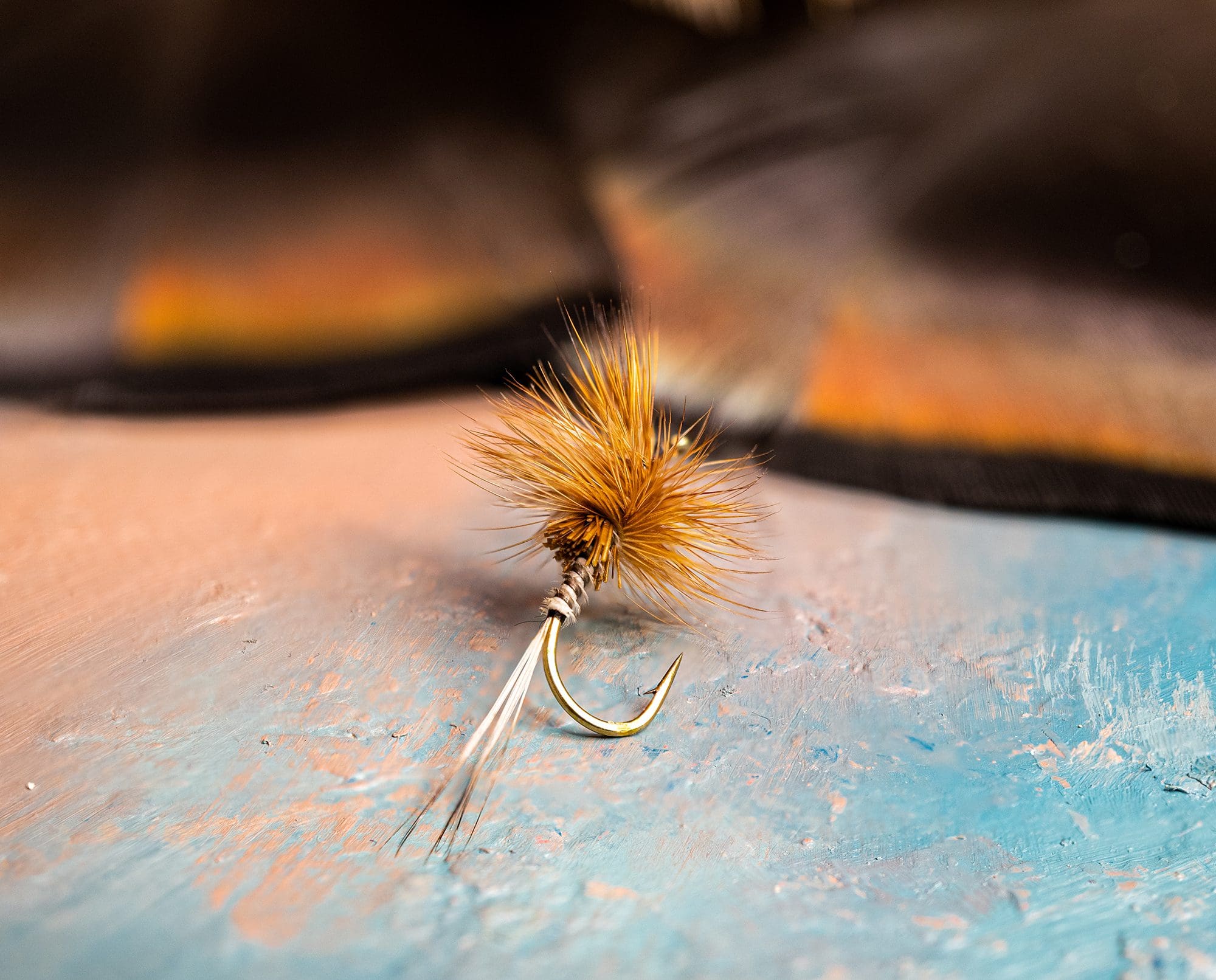
The joy of turkey hunting doesn’t have to end once the season closes; consider using the feathers from your bird to tie your own fly patterns
Once the spring turkey season ends, many of us pivot to our local rivers and lakes to cast flies at fish. However, the thrill of your hunt does not have to end once the fly rod is strung. Many of the fly patterns attached to our leaders are tied with turkey feathers, and what could be a more rewarding full-circle experience than catching fish with flies made from the turkey you harvested?
Turkey feathers, just like many upland birds, are quite versatile in the world of fly tying. Plucking a couple of handfuls of select feathers from your bird is enough to tie several seasons’ worth of flies. With a little insight into which feathers to save and use, you can create an array of fly patterns that will be cherished every time you open your fly box.
The tom or jake you harvest in the spring—or hen during the fall—will gift you with a wealth of fly-tying feathers. There are five groups of feathers that tyers key in on: the primary and secondary flight feathers, the tail and breast feathers, and marabou.
Procuring and preserving turkey feathers for fly tying
First, let’s cover how to collect and preserve feathers from your bird. While smaller game birds, like grouse or pheasant, can be skinned and preserved, plucking or cutting feathers from your turkey is a simpler method. Typically, the breast feathers and marabou are easily plucked free from the turkey. You can also pluck the primary, secondary, and tail feathers, or use shears and snip them close to the skin.
The feathers may be dusty or dirty. If this is the case, fill a small container with lukewarm water and a few drops of liquid dish soap. Soak the feathers for about 10 minutes, drain them into a colander, rinse them over with clean water, and then lay them out to dry. Once dry, place the groups of feathers into separate ziplock bags or storage containers for easy organization and to prevent pests (and pets) from getting to them.
Breaking down turkey feathers and their use for fly tying
Primary feathers
Primary flight feathers are used almost exclusively for their biots which are fantastic fly tying material. Biots are found on the leading edge of the primary feather and lay folded over one another. When you pull one of the biots free from the feather stem you will notice their needle-like appearance and webby texture. Generally, they are about 1 1/2 inches long.
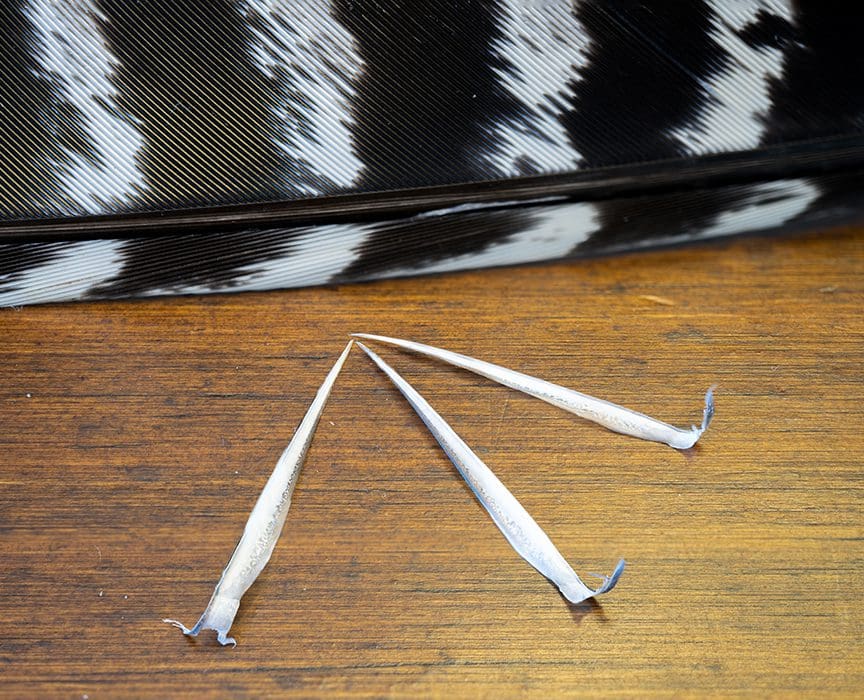
Whenever a fly recipe calls for biots, it will either be turkey or goose biots. Turkey biots are longer than goose biots which lend themselves better to flies tied on hook sizes 14 and larger. This material is amazing at re-creating the segmented look of insect bodies for nymphs, emergers, dry, and wet flies. Biots can also be used to resemble tails and wings for nymph patterns, such as the Prince Nymph.
Secondary feathers
Secondary flight feathers, known as quills, are large feathers taken from the turkey’s wing and are beautifully mottled in natural, earth-toned colors. These feathers are highly useful for winged wet flies and certain winged streamers like the classic Muddler Minnow. When collecting these feathers, you will want to grab some from each wing. Many of the winged fly pattern recipes call for “matched turkey quill slips,” which means pairing up a secondary feather from the left wing with one from the right. These matched slips help to create a symmetrical wing for the fly.
Tyler Balich, manager of the North 40 Fly Shop in Coeur D’Alene, Idaho, noted, “A couple of my favorite patterns to tie are a Dave’s Hopper and a Kauffman’s stone nymph.
“I commercially tied for a while … I can remember laying out dozens of turkey quills and spraying them with 3M spray adhesive out in the parking lot,” Balich added. “We’d go through dozens of quills every winter.”
Beyond winged flies, quills can be used for wing cases on nymphs—such as the Pheasant Tail Nymph—as they mimic folded wings. Quills can also be wrapped around the hook to build the abdomen, or body, of a dry fly or nymph, but tail feathers are a bit easier for this application.
Tail feathers
Turkey tail feathers, if you are not planning on mounting the tail fan, are another highly functional piece of fly tying material. The fibers from the tail feather can be applied to a multitude of patterns and are a great substitute for when a fly recipe calls for pheasant.
“The tail feathers have a very similar look to pheasant tail, perfect for nymph bodies,” Balich said. “It’s really endless on the uses.”
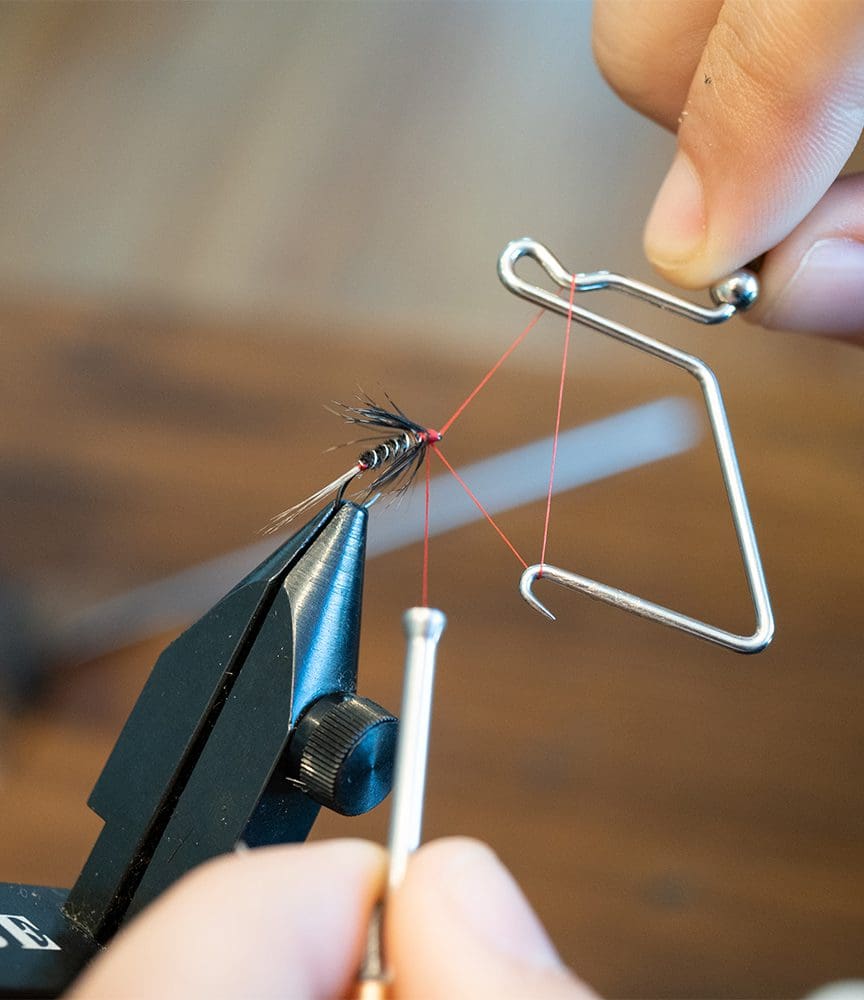
Tail feather fibers make great bodies for caddis nymph patterns, such as the Frenchie. However, just like pheasant fibers, they need to be reinforced by wrapping copper wire over them or laying down a base of super glue before wrapping the fibers around the hook in order to increase the fly’s longevity.
The ever-classic Pheasant Tail Nymph can be tied using almost all turkey tail feather fibers. The cinnamon tip fibers make great tails for the pattern, while the rest of the tail feather fibers can be used for the abdomen, wing case, and legs. To replicate the shiny thorax on the Pheasant Tail Nymph, turkey breast feathers work well.
Breast feathers
The breast feathers, or flats, are an often-overlooked material in fly tying, but once you start to tie with them you will discover a range of utilizations.
Traditionally, flats are used to create posts on parachute patterns and divided wings on Catskill-style flies. However, these are usually pen-raised, white bird feathers that can be dyed in a variety of colors. Wild turkey flats can still be used for the same application, but the fly will end up being less visible on the water. This can be beneficial, though, if you are needing a more subtle pattern for picky trout.
Flats can also sometimes be substituted for recipes that call for peacock herl. While the flats do not have the same fibrous look as those on peacocks, their iridescent colors will lend themselves nicely as an option for when you need a bit of shine or pop in your fly.
Marabou feathers
Lastly, there is turkey marabou which are the downy, fluffy feathers that predominantly come from the flanks of the bird and the underside of the tail fan near the vent area.
“I’d venture to say most folks don’t know that common marabou is from a turkey flank,” Balich noted. “So, there is quite a bit of it on a bird; definitely worth taking off and saving.”
Marabou is employed in an assortment of streamer patterns like the Wooly Bugger, Bang Tail, and Sparkle Minnow, as well as iconic carp patterns like the Backstabber. It can also be twisted and wrapped around the hook shank to build wonderful nymph and wet fly bodies.
Commercial, white marabou is dyed in a variety of colors, but wild turkey marabou is usually stuck with a black to pale-gray color. To add contrast to your flies tied with wild turkey marabou, it may be helpful to pair it with some colorful commercial marabou.
Tying together turkey season and fly fishing
A wild turkey is a breadbasket of fly tying materials. From nymphs and emergers to dry flies and streamers, turkey feathers are employed across a wide spectrum to create fly patterns effective at catching trout, bass, panfish, carp, and anything else you cast a fly rod for.
One turkey could become a lifetime supply of material, as well as a fantastic gift to share with your fly-tying partners.



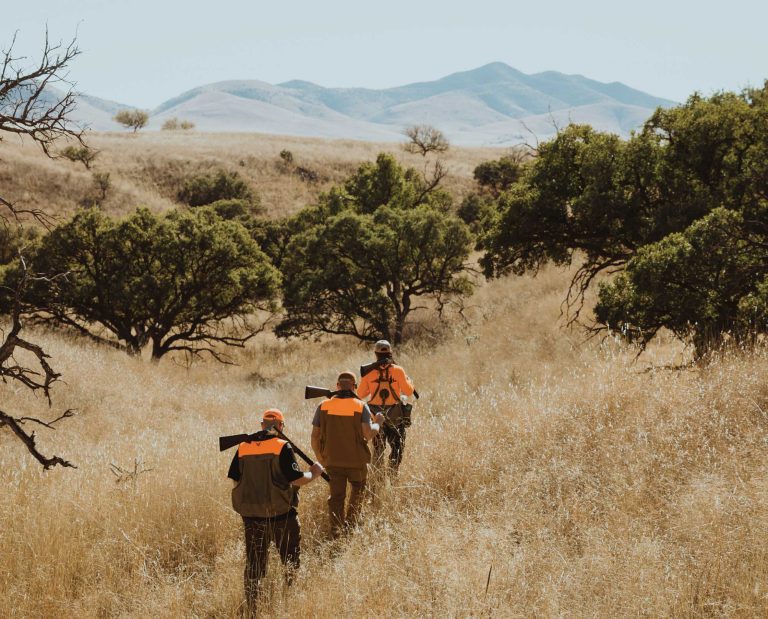
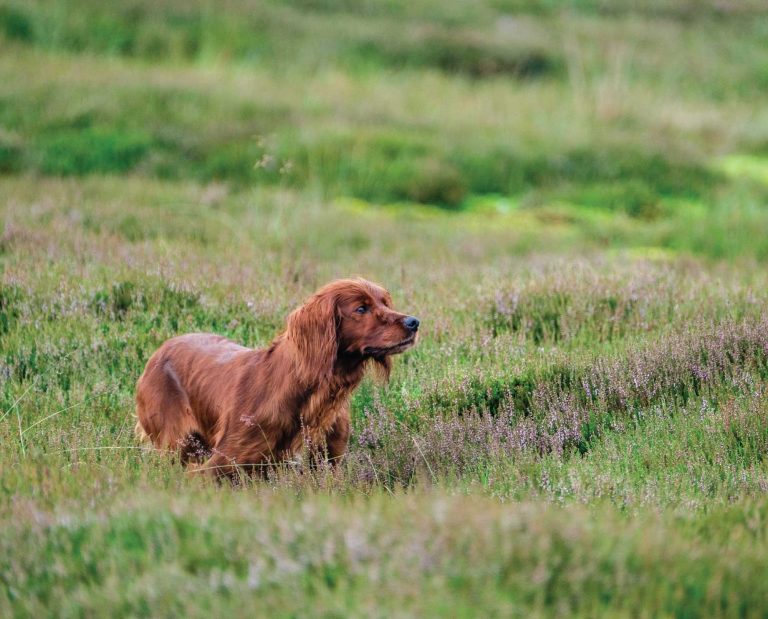
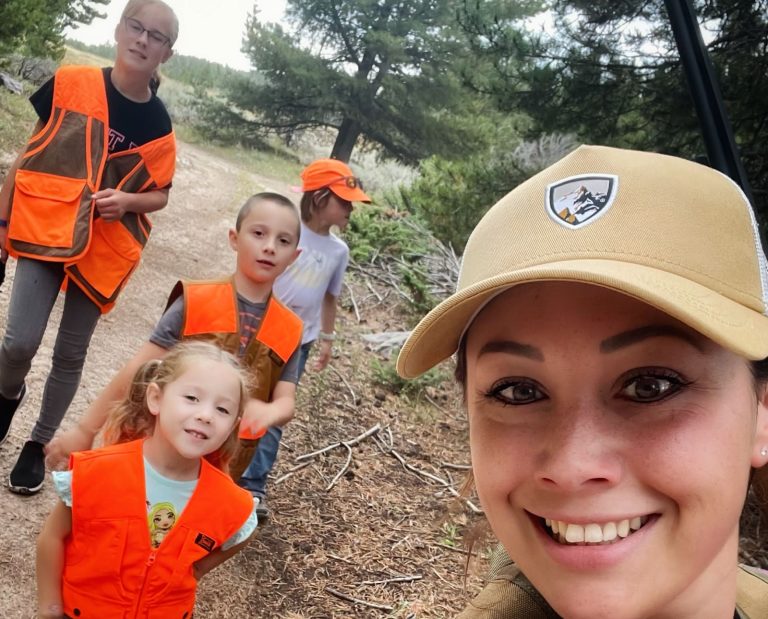
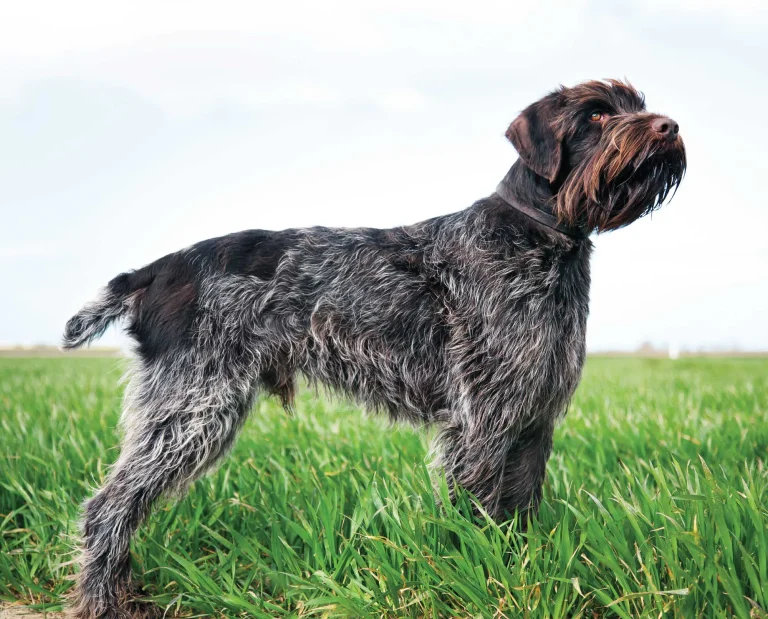


Terrific article
Your photos and detailed info are very helpful